
Death Zones and Darling Spies
1,790.00₹ 790.00₹
In 1961, equipped with a master’s degree from famed Columbia Journalism School and letters of introduction to Associated Press bureau chiefs in Asia, twenty-six-year-old Beverly Deepe set off on a trip around the world. Allotting just two weeks to South Vietnam, she was still there seven years later, having then earned the distinction of being the longest-serving American correspondent covering the Vietnam War and garnering a Pulitzer Prize nomination.
In Death Zones and Darling Spies, Beverly Deepe Keever describes what it was like for a farm girl from Nebraska to find herself halfway around the world, trying to make sense of one of the nation’s bloodiest and bitterest wars. She arrived in Saigon as Vietnam’s war entered a new phase and American helicopter units and provincial advisers were unpacking. She tells of traveling from her Saigon apartment to jungles where Wild West–styled forts first dotted Vietnam’s borders and where, seven years later, they fell like dominoes from communist-led attacks. In 1965 she braved elephant grass with American combat units armed with unparalleled technology to observe their valor—and their inability to distinguish friendly farmers from hide-and-seek guerrillas.
Keever’s trove of tissue-thin memos to editors, along with published and unpublished dispatches for New York and London media, provide the reader with you-are-there descriptions of Buddhist demonstrations and turning-point coups as well as phony ones. Two Vietnamese interpreters, self-described as “darling spies,” helped her decode Vietnam’s shadow world and subterranean war. These memoirs, at once personal and panoramic, chronicle the horrors of war and a rise and decline of American power and prestige.

Civil Enculturation
8,400.00₹ 2,290.00₹
For several years now, the concepts of ‘civil culture’ and ‘civil society’ have been widely discussed in the social sciences. Theoretically innovative and empirically rich, this volume is one of few studies that offer solid and focused ethnographic research on how the tenets and assumptions of civil culture are inculcated in schools. The authors examined school curricula, texts and pedagogical practices, observed daily interaction within the schools and outside, and conducted numerous interviews and discussion groups. The experience of students from Turkish backgrounds in the four countries was given special attention, thus offering valuable insights into the changing dynamics of nation-state civil cultures in multicultural societies.

Fairness and Division of Labor in Market Societies
8,400.00₹ 2,495.00₹
Contrary to the explanations offered by the theory of non-reflexive, path-dependent institutionalism, the U.S. and the German automotive industries undertook strikingly similar patterns of industry modification under tough international competition during the 1990s, departing from their traditional national patterns. By investigating the processes of the U.S. and German adjustments, the author critically reconsiders the prevalent paradigms of political economy and comes to the conclusion that the evidence does not confirm the neoliberal paradigm. In order to better account for the recomposition of new market relations, which the author terms “converging but non-liberal” and “diverging but not predetermined” markets, he proposes an alternative model of “politics among reflexive agents,” emphasizing different kinds of problem-solving practices among those reflexive agents. He argues that different forms and regimes of market are established in the process of recomposition, in which agents reflect upon not only market rationality but also upon their own institutions, creating new norms.
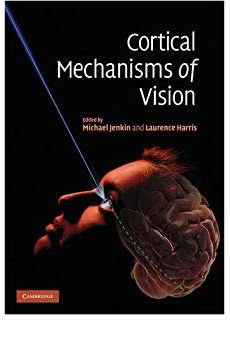
Cortical Mechanisms of Vision
9,990.00₹ 2,180.00₹
The advent of sensors capable of localizing portions of the brain involved in specific computations has provided significant insights into normal visual information processing and specific neurological conditions. Aided by devices such as fMRI, researchers are now able to construct highly detailed models of how the brain processes specific patterns of visual information. This book brings together some of the strongest thinkers in this field, to explore cortical visual information processing and its underlying mechanisms. It is an excellent resource for vision researchers with both biological and computational backgrounds, and is an essential guide for graduate students just starting out in the field.

Cured II – LENT Cancer Survivorship Research And Education
9,995.00₹ 1,925.00₹
Multimodal treatment lies at the heart of the improvement in cancer cure rates. However, the more aggressive the treatment, the more adverse effects in normal tissues can be anticipated. Against this background, a major paradigm shift has taken place in that there is a new focus on cancer survivorship and quality of life: the life worth saving must be worth living. This volume is based on the CURED II conference held in May 2007, which was attended by scientists from many leading institutions. The volume comprises 18 chapters by leading experts who address a variety of important topics relating to late treatment effects, such as mechanisms and evolution of injury, risk factors, the role of screening, options for interventions, second malignancies, and prevention. It is hoped that it will assist the reader in understanding how to prevent and treat the long-term side-effects of irradiation, thus improving the quality of life of long-term survivors of cancer.

Human Herpesviruses: Biology, Therapy, and Immunoprophylaxis
42,495.00₹ 16,990.00₹
This definitive and comprehensive account of the human herpes viruses provides an encyclopedic overview of their basic virology and clinical manifestations. This group of viruses includes human simplex type 1 and 2, Epstein Barr virus, cytomegalovirus and varicella-zoster virus. The diseases they cause are significant and often recurrent. Their prevalence in the developed world accounts for a major burden of disease, and as a result there is a great deal of research into the pathophysiology if infection and immunobiology. Another important area covered within this volume concerns antiviral therapy and the development of vaccines. All these aspects are covered in depth and the volume is fully up to date both scientifically and in terms of clinical guidelines for patient care. The text is generously illustrated throughout and fully referenced to the latest research and developments.
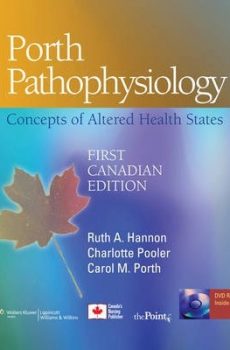
Porth Pathophysiology
6,990.00₹ 2,495.00₹
The well respected textbook “Pathophysiology: Concepts of Altered Health States” has now been fully adapted for Canadian undergraduate nursing and health professions students. Like the original text, this Canadian edition includes a review of anatomy and physiology and treatment information for commonly occurring disease states. Pediatric, geriatric, and pregnancy deviations are integrated throughout and highlighted with icons for easy identification. Canadian content includes Canadian healthcare statistics regarding incidence; cultural variations, with a focus on native population and largest immigrant populations; Canadian research and researchers; Canadian treatment protocols and guidelines; and commonly occurring disease concerns based on Canadian statistics.

DNA Replication and Human Disease
9,700.00₹ 4,195.00₹
At least 5 trillion cell divisions are required for a fertilized egg to develop into an adult human, resulting in the production of more than 20 trillion meters of DNA! And yet, with only two exceptions, the genome is replicated once and only once each time a cell divides. How is this feat accomplished? What happens when errors occur? This book addresses these questions by presenting a thorough analysis of the molecular events that govern DNA replication in eukaryotic cells. The association between genome replication and cell proliferation, disease pathogenesis, and the development of targeted therapeutics is also addressed. At least 160 proteins are involved in replicating the human genome, and at least 40 diseases are caused by aberrant DNA replication, 35 by mutations in genes required for DNA replication or repair, 7 by mutations generated during mitochondrial DNA replication, and more than 40 by DNA viruses. Consequently, a growing number of therapeutic drugs are targeted to DNA replication proteins. This authoritative volume provides a rich source of information for researchers, physicians, and teachers, and will stimulate thinking about the relevance of DNA replication to human disease.

Neuroendocrine Correlates of Sleep/Wakefulness
12,900.00₹ 3,700.00₹
As the title suggests, and unlike other existing books on sleep medicine, Neuroendocrine Correlates of Sleep/Wakefulness will be devoted primarily to endocrine regulation of the behavioral state control. It will address a wide spectrum of sleep./wakefulness phenomena (both animals and humans), including pathogenesis, diagnosis, and management.From molecular biology to applied clinical therapy, sleep research has been transformed in the last few years from a research backwater to an important interdisciplinary field.Anyone who regularly reads the literature on sleep, biological rhythms, or neuroendocrinology is aware that one of the subspecialties within sleep medicine, the neuroendocrine correlates of sleep/wakefulness, has in particular experienced a growth rate that is even faster than that of the field as a whole. To a significant extent this has been due to the introduction of new research technologies.
The widespread adoption of a range of new methods in sleep research has opened a window into activities at the cellular and molecular level, which previously had been tightly closed. Consequently these activities are being characterized with a degree of precision and sensitivity that is without precedent. This volume invites the reader to explore the new vistas that have been opened onto the neuroendocrine frontier of sleep medicine. The editors have selectively identified a number of key articles having a citation frequency, which is considerably above the norm or which otherwise have contributed importantly to defining the neuroendocrine perspective.
This new volume on Neuroendocrine Correlates of Sleep/Wakefulness is an up-to-date resource of research summaries and reviews written by major contributors to the fields of sleep, biological rhythms and neuroendocrinology. Its coverage is broad and its basic and clinical science reviews are detailed.
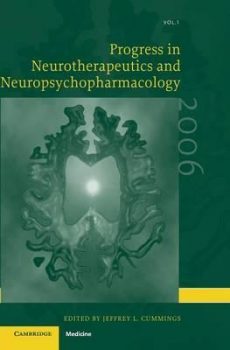
Progress in Neurotherapeutics and Neuropsychopharmacology
12,180.00₹ 2,770.00₹
Published annually, volumes in this series provide readers with updates of clinical trial results, impacts of trials on guidelines and evidence-based practice, advances in trial methodologies, and the evolution of biomarkers in trials. The series focuses on trials in neurotherapeutics, including disease-modifying and symptomatic agents for neurological diseases, psychopharmacological management of neurologic and psychiatric illnesses, and non-drug treatments. Each paper is authored by a leader in the area of neurotherapeutics and clinical trials, and the series is guided by an editor-in-chief and editorial board with broad experience in drug development and neuropsychopharmacology. Progress in Neurotherapeutics and Neuropsychopharmacology is an essential update of trials in all aspects of the management of neurologic and neuropsychiatric disorders, and will be an invaluable resource for practising neurologists as well as clinical and translational neuroscientists.

Exercise-Induced Acute Renal Failure
8,100.00₹ 3,590.00₹
Acute renal failure induced by rhabdomyolysis after strenuous, prolonged exercise such as marathon running or mountain climbing is a well-known medical phenomenon, but exercise-induced acute renal failure after short-term anaerobic exercise – for instance, short-distance track races – has been recognized only recently. This monograph provides in-depth information on exercise-induced acute renal failure after short-term anaerobic exercise, which causes severe pain in the loin and patchy renal ischemia with no sign of rhabdomyolysis. Half of the patients suffering from this condition experience renal hypouricemia, for which approximately 20% are treated with dialysis. This complete clinical reference book includes characteristics of the disease, diagnosis, treatment and prognosis, and corresponding preventive measures. Important information on gene analysis and etiology is also included, creating a valuable resource for nephrologists as well as for emergency physicians and those in the field of sports medicine.

Psychoprosthetics
9,995.00₹ 1,995.00₹
Psychoprosthetics is the study of the psychological aspects of prosthetic use and of rehabilitative processes in those conditions that require the use of prosthetic devices. For people with limb loss, the fitting of a prosthesis can give rise to a variety of issues from functional rehabilitation to quality of life, well-being, participation in society and cosmetic satisfaction. As prosthetic technology continues to become more sophisticated and advanced, there is an onus on those who work with prosthetic users, to be aware of the impact of prosthetics on the ways in which people understand and construct their realities and their attempts to cope with and relate to them. However, despite the broad and increasing interest in psychosocial aspects of prosthetic use and rehabilitation, to date there has not been a complete volume on the topic – this book now addresses that need.
Psychoprosthetics brings together the most recent and exciting research and knowledge in this new field into one easily accessible volume. It contributes to a better understanding of the complex human dynamics involved in prosthetic use and provides an analysis of the practice, research and theory in the field of psychoprosthetics.
Written by some of the leading experts to the field, this informative and cutting-edge text will be of relevance to students, practitioners and researchers from a wide range of disciplines, including prosthetics and orthotics, occupational therapy, physiotherapy, rehabilitation medicine, engineering, nursing and psychology.
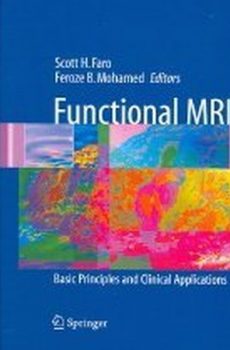
Functional MRI
15,000.00₹ 1,970.00₹
Scott H. Faro and Feroze B. Mohamed have succeeded in translating benchmark research on functional MRI into clinical applications for the physician and cognitive neuroscientist, providing those unfamiliar with fMRI physics with much needed background. This practical and timely volume presents an overview of the principles of fMRI and explains key concepts, including scanning methodologies, experimental research design, and data analysis. Informative discussions cover the technical and clinical challenges associated with fMRI. A neuroanatomical atlas adds to the sensible approach and serves as a useful reference by clearly illustrating normal functioning for important areas of the brain. The final section of the book is devoted to fundamental clinical applications of fMRI in motor, sensory, language, cognitive, and pharmacology. A concluding chapter addresses future applications. Contributors to this comprehensive volume include internationally recognized neuroradiologists, neurologists, psychiatrists, cognitive neuroscientists, and physicists. A wealth of four-color illustrations completes this essential text.
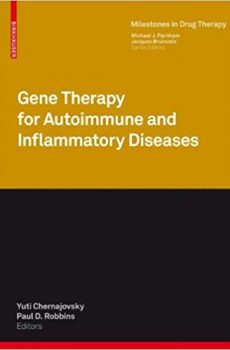
Gene Therapy for Autoimmune and Inflammatory Diseases
14,400.00₹ 8,900.00₹
In this monograph about gene therapy of autoimmune and inflammatory d- orders we have gathered international experts and leaders from different fields to review the state of the art advances on topics ranging from disease entities to vectors and engineered cells. The different approaches described in each chapter take into consideration the biomedical knowledge of these diseases and address the complexities of delivering long-term genetic interventions. Gene therapy also serves as a testing ground for new therapeutic entities and helps provide proof of principle for their potential therapeutic role in animal models of disease. Scaling up from mice to men still remains an important h- dle not only from the quantitative point of view, but also for currently unknown and unexpected secondary effects of the vector or the transgene. Some of these approaches have already been tested in the clinic, but much more needs to be done to understand the human conditions treated and the n- ural history of their pathology. We are indebted to the secretarial assistance of Ms. Lin Wells (Bone and Joint Research Unit, London, UK) and the help of Hans Detlef Klüber for his help in getting this book published. We hope this book will be of interest to c- nicians and scientists and inspiring to students of the subject who will use their own ingenuity and knowledge to further forward this discipline into clinical use.

Management of Heart Failure
12,720.00₹ 2,250.00₹
Management of Heart Failure has been conceived as a rapid but comprehensive review for practitioners of all persuasions involved in the management of patients with heart failure. Heart failure is a problem of epidemic proportions in all parts of the world. State of the art treatment may not be accessible to all, but simply creating an awareness of simple methods of diagnosis and treatment would assist in promoting a better global response to this epidemic.
This practical volume, written by a panel of world-renown cardiology experts, focuses on the surgical management of heart failure. Surgery for heart failure is an evolving and new area in cardiac surgery with many exciting developments.
This volume will be essential reading for all specialists dealing with patients with or who are at risk of heart failure, including but not limited to cardiologists, emergency medicine physicians, critical care physicians, anesthesiologists, interventionalists and cardiothoracic surgeons.
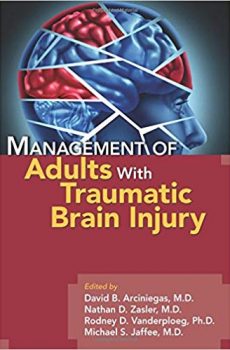
Management of Adults With Traumatic Brain Injury
5,600.00₹ 4,900.00₹
Traumatic brain injury (TBI) is a public health issue of worldwide proportions, affecting motorists, victims of interpersonal violence, athletes, military service members, and Veterans, among others. Management of Adults with Traumatic Brain Injury provides evidence-informed guidance on the core topics in brain injury medicine, including the epidemiology and pathophysiology of TBI, the medical evaluation and neuropsychological assessment of persons with TBI, and the common cognitive, emotional, behavioral, and other neurological disturbances for which persons with TBI and their families seek clinical care. Impressive breadth and depth of coverage, logical structure, clinically rich detail, and concise presentation make Management of Adults with Traumatic Brain Injury a must-read for every physician, nurse, and mental health practitioner working to improve the lives of persons with TBI.
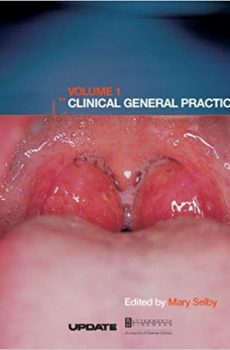
Clinical General Practice
3,990.00₹ 1,395.00₹
This title offers comprehensive coverage of the best clinical management in primary care. It is based on the curriculum of Update (a primary care journal), in which topics are approached on a structured, modular basis. Each topic tackles a key therapy area in general practice over four issues of Update,including a practice-informed article written by a specialist. These modules have been edited into a full-colour book format, which will be published in 2 volumes, covering the entire curriculum. This book is the first of those volumes.
The Update curriculum on which the book is based is a PGEA approved Distance Learning programme, and as GPs are required to fulfill 24 PGEA hours each year, this title should prove an invaluable tool to help achieve this. Up to 10 PGEA hours are available using the self-assessment and multiple choice questions at the end of each volume, which GPs will be able to send to Update with a fee for certification.

Complementary and Alternative Medicine for Child and Adolescent Care
3,290.00₹ 990.00₹
There are a number of books about complementary therapies for nurses, but these mostly take a therapy-led approach. This new book, written by an experienced nurse, health visitor and teacher, uses a problem-based approach that relates to conditions presenting in everyday practice.
Childrens health, psychological and social needs are qualitatively and quantitatively different from those of adults and the author has for this reason addressed not only medical conditions but also psycho-social development problems.
Well-referenced and evidence-based, this book is an essential companion for all healthcare professionals who treat children and young adults.
Key Features
- Provides practical, problem-based information on common conditions
- Offers reliable advice on the use of alternative therapies in an holistic manner – to support not only the patient, but also the family
- Includes evidence-based information that reflects the principles of SCOPE
- Presents expert advice from a qualified nurse/health visitor and complementary therapist
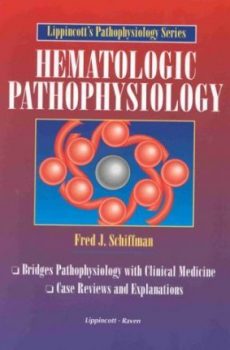
Hematologic Pathophysiology
2,290.00₹ 1,150.00₹
This volume enables students to master the science and clinical applications of hematologic pathophysiology and develop the problem-solving skills that are needed for exams and clinical rotations. The book provides a solid overview of hematology and applies scientific principles to actual clinical cases and problems. This unique “case-problem” format prepares students to link basic science to clinical medicine as emphasized in today’s exams.Using actual patient cases to illustrate hematologic principles, the book covers the life cycles, structures, and physiology of red and white blood cells and then discusses hemostasis, bone marrow disorders, and hematologic malignancies. Boxed case-problems challenge the student to apply key hematologic principles in a variety of clinical decisions. Numerous two-color drawings and schematics illustrate all essential concepts, and subheads, color highlights, and tables aid in comprehension and review.
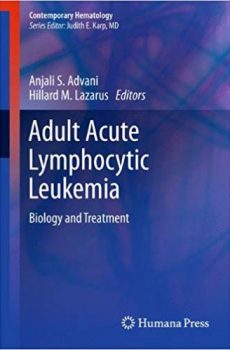
Adult Acute Lymphocytic Leukemia
19,990.00₹ 9,990.00₹
The current explosion of new areas of controversy in the treatment of acute lymphocytic leukemia in adults and young adults makes this comprehensive book a much needed reference for hematologists and oncologists. This book assembles leading authorities from around the globe to cover the full spectrum of ALL subtypes and their treatments. Specific topics of discussion include indications for allogeneic bone marrow transplant in first complete remission, the role of minimal residual disease in making treatment decisions, the treatment of young adults, and the treatment of Philadelphia chromosome positive ALL with the advent of the tyrosine kinase inhibitors. This is the first book to focus exclusively on the adult ALL patient. It provides a complete overview of diagnosis, molecular pathogenesis, evaluation, and treatment for this important patient population.





















